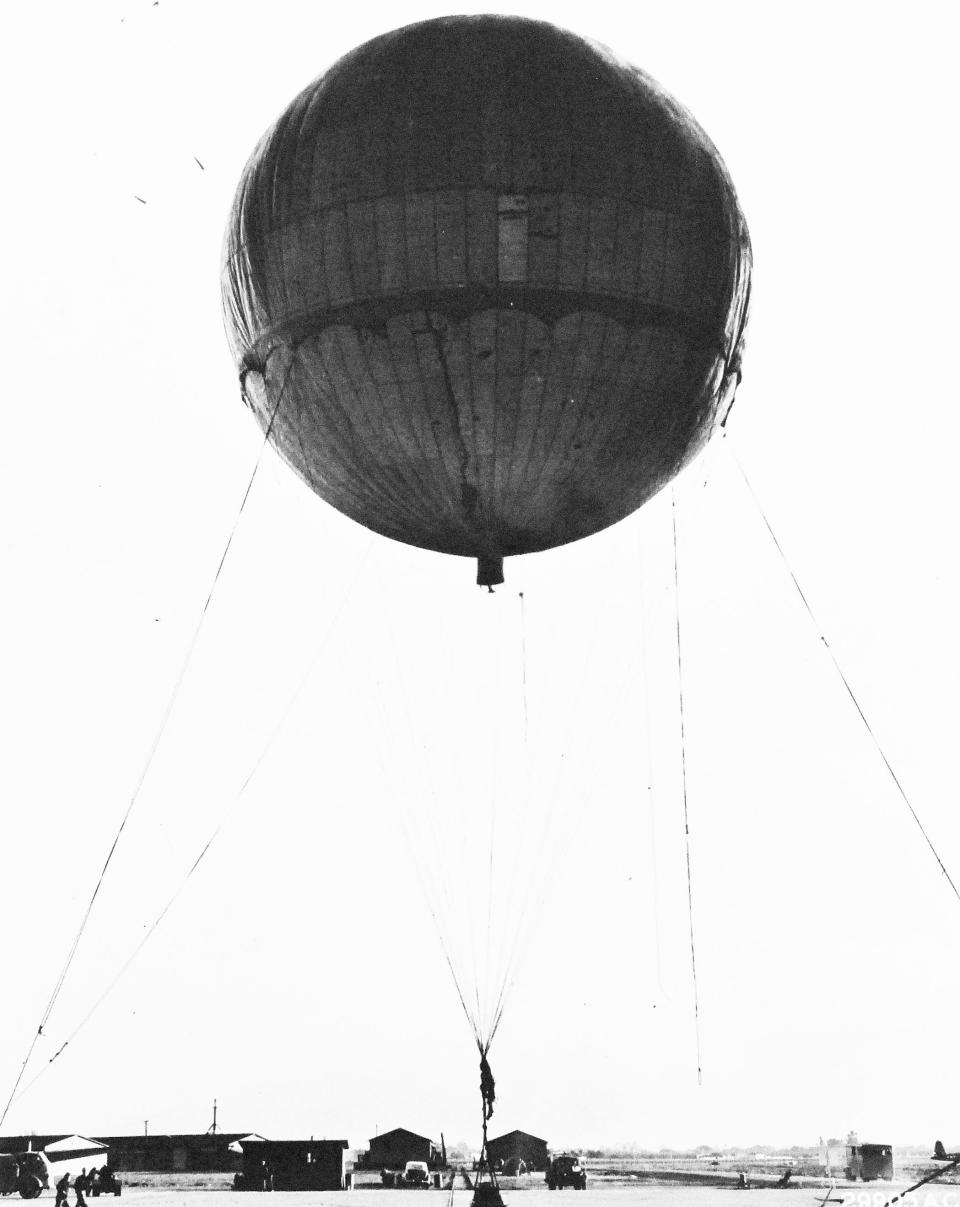Opinion: Intrigued by Chinese weather balloon? Check out this forgotten WWII-era history
The images Friday were surreal, and not a little unsettling: a large white balloon hovering ominously at 60,000 feet in the big blue skies over Billings, Montana. American warplanes eventually shot it down off the coast of South Carolina, and recovery efforts will likely reveal it to have been an effort at surveillance (and not a "regrettably off-course" meteorological instrument) in the current cold war between the U.S. and China — bizarre, clumsy, quaintly antique in our age of precision space satellites. In any case, it is worth remembering that this kind of aerial maneuver has precedents in military history going back at least to the 1860s.
One example, long-forgotten in the public imagination, is a campaign waged against the U.S. by the Japanese Empire in the waning months of World War II. Refusing to accept the certainty of defeat, its cities pounded night-and-day by B-29 firebombing raids, in November 1944 Hirohito’s government tried to strike back by setting waves of bomb-carrying hydrogen balloons into the air. The hope was that the recently-discovered jet stream would push them across the Pacific.

Teams of schoolgirls had been put to work weaving thin fibrous paper made from mulberry bushes into the sturdy, canvas-like balloon covers, more than thirty feet in diameter, according to historian Ross Coen. With their ingenious design, perhaps the random havoc they created ― among Americans and Canadians ― would throw a wrench, at least temporarily, into the smoothly-humming production machinery of the Arsenal of Democracy.
Predictably, only a small fraction of the 9,000 or so fu-go (“wind-ship weapon”) devices survived the 6,000-mile trip over the ocean. About 300 were spotted and/or recovered in the U.S., mostly in remote areas of the mountain west. They sparked a few forest fires, and one got tangled in power lines outside the plant in Hanford, Wash. that was secretly processing plutonium for use in the race to build an atom bomb. Another one produced fatalities, killing a minister’s wife and five children in Oregon unlucky enough to have been picnicking near where it touched down and, on a delayed fuse, detonated. They were the only mainland deaths by enemy attack on the U.S. mainland during WWII.
Incredibly, at least two of the “fire balloons” drifted as far east as Michigan. In February 1945, one settled down quietly in rural Allegan County south of Grand Rapids. The following month, residents near 8 Mile and Gill roads in Farmington, northwest of Detroit, saw a second War of the Worlds-style UFO explode and sputter fire. John T. Cook found the remnants of the strange “tin can” that caused the spectacle a month later while tending his vegetable garden. Cook showed it to his neighbor, a police officer, and soon experts from Washington D.C. had descended on the property to see if they could determine for sure what it was. They confirmed later it was an incendiary device of Japanese origin.
To avoid panic (and deny Tokyo any intelligence about the results of what amounted to history’s first intercontinental ballistic missile program), the War Department withheld details of the balloon bomb offensive until several months after the war had ended.
There may be more artifacts out there, like the one that was discovered in British Columbia in 2019. But no large-scale damage was done, no airfield, army base or munitions plant disrupted, even for a second. Tokyo’s fu-go offensive amounted to a last-ditch act of desperation, doomed to failure from the start.
Gregory Sumner is professor of history at the University of Detroit Mercy. His books include "Detroit in WWII" and "Michigan POW Camps in WWII," both published by The History Press. Contact the Detroit Free Press opinion page: letters@freepress.com.
This article originally appeared on Detroit Free Press: Opinion: Chinese weather balloon brings back memories of WWII tactics

